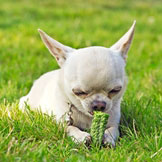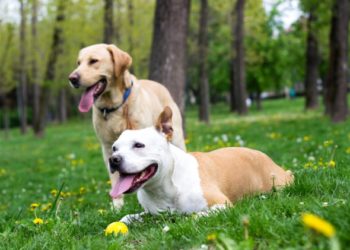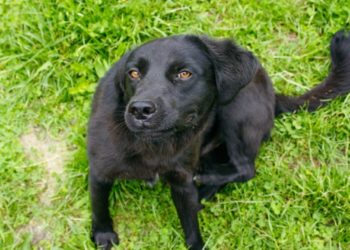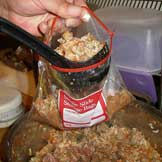
I’ve found that whenever I talk about the nutrients that dogs require in a balanced diet I tend to gloss over the microminerals – minerals that are required in the diet in relatively small amounts. The big players like protein, carbohydrates, and fat get the most attention.
Vitamins also have their spot in the limelight because of their importance as antioxidants and in immune support. Macrominerals (minerals are needed in relatively large amounts) like calcium, phosphorus, sodium, potassium, chloride, and magnesium also get their fair share of press. Microminerals, however, are the Rodney Dangerfield of nutrients. They don’t get much respect.
Let’s fix that today with a brief primer on what roles microminerals play in a dog’s diet.
Copper
Adequate dietary sources of copper are needed if a dog’s bones, connective tissue, collagen, and myelin (the protective covering of nerves) are to form properly. Copper helps the body absorb iron, making it an important part of red blood cell function. It can also act as an antioxidant, is a part of many enzymes, and is necessary for the formation of melanin, the pigment that darkens hair and skin. Copper can be found in meat, liver, fish, whole grains, and legumes, and is typically added as a supplement to commercially prepared foods.
Iodine
Iodine’s primary role in the body is in the manufacture of thyroid hormones that regulate growth and the body’s metabolic rate. Iodine is found in fish and iodized salt. It can also be included in pet foods by adding calcium iodate, potassium iodide, or other supplements.
Iron
Iron is a central component of hemoglobin and myoglobin, the molecules that carry oxygen in blood and muscle respectively. It also is a part of many enzymes, particularly those that are catalysts to energy production in cells. Iron is naturally found in meat, liver, fish, green vegetables, whole grains, and legumes. Supplemental iron may also be added to dog foods.
Manganese
Dogs need manganese to produce energy, metabolize protein and carbohydrates, and to make fatty acids. Manganese is an important part of many enzymes and plays a role in the health and maintenance of bone and cartilage in joints. Meat is not a good source of manganese, but the nutrient can be found in whole grains, legumes, eggs, fruits, and green vegetables. To ensure that dogs get enough manganese in their diets, most manufacturers add it as a supplement to their foods.
Selenium
Selenium is a potent antioxidant that acts in concert with Vitamin E to protect cells from damage caused by free radicals. Selenium is found in high concentrations in plants grown in selenium-rich soils. The meat of animals that eat such plants can also be a source, as can eggs and some types of fish. To ensure that dogs get enough selenium, pet food manufacturers add supplements to their products.
Zinc
Adequate amounts of zinc are essential to the health of a dog’s coat and skin, ability to reproduce, and for the functioning of many enzymes that are essential to normal metabolism. Zinc also plays a role in helping muscles work optimally during high intensity exercise. Zinc is present in relatively large amounts in meat, eggs, and dairy products, but is also added as a supplement to dog foods.

Dr. Jennifer Coates
Image: Little Moon / via Shutterstock









